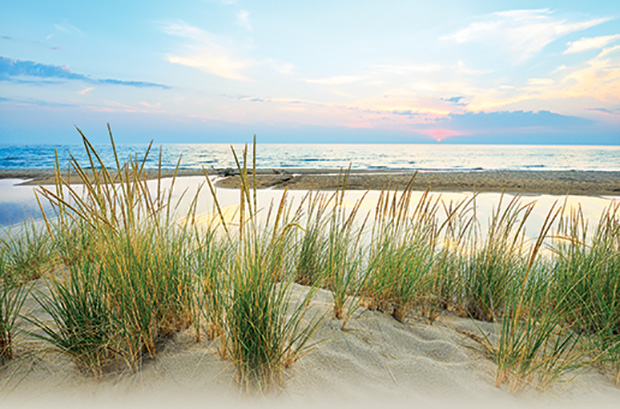
It’s no secret that we could all probably benefit from going outside and getting some fresh air from time to time. Unfortunately, as we get older, we often grow more sedentary. Many of us may become residents of our couches and living rooms. But new studies show that regular access to nature can actually improve the quality of life in older adults. This is because nature is an excellent place to “get away from it all”, and spending some time with nature has been shown to promote physical, mental, and even spiritual well-being for many adults. While this has long been suspected, research conducted by a student from the University of Minnesota with a research team in Vancouver, B.C. seems to support this claim.
How Nature Affects Well-Being
This study, titled “Therapeutic landscapes and wellbeing later in life: impacts of blue and green spaces for older adults”, was published in the journal Heath and Place which showcases research which examines the relationship between health, healthcare, and location. This study in particular revealed that blue and green spaces tend to promote feelings of renewal, restoration, and spiritual connectedness in older adults. Such spaces also provided a venue for social engagement, including planned activities with friends and family as well as random encounters across generations.
Jessica Finlay, a lead author on the paper and former research assistant on the project notes that:
“Accessibility to everyday green and blue spaces encourages seniors to simply get out the door. This in turn motivates them to be active physically, spiritually and socially, which can offset chronic illness, disability and isolation.”
In other words, contact with the outdoors in a way disrupts the sedentary and mundane lifestyle of older adults by providing them with a new environment to engage with outside the home, one with proven physical and psychological benefits and various external stimuli to keep them mentally active.
Going Outdoors Daily Can Improve Mental Health
The implementation of more natural spaces for people, both old and young, to engage in can be relatively simple. Smaller features like a bench facing flowers, a garden, or a koi pond, can be utilized by urban planners and act as a natural resource for older adults to feel at peace whilst simultaneously being stimulated outside of the home. In fact, a study published by the US National Library of Medicine seems to support these claims. Titled “Going outdoors daily predicts long-term functional and health benefits among ambulatory older people”, the study reveals that “Participants going out daily at age 70 reported significantly fewer new complaints at age 77 of musculoskeletal pain, sleep problems, urinary incontinence, and decline in activities of daily living (ADLs). Logistic regression analysis indicated that not going out daily at age 70 was predictive of subsequent dependence in ADL, poor self-rated health, and urinary incontinence at age 77.”
Finlay claims that after observing the daily life of several seniors aged 65 to 86, she discovered:
“how a relatively mundane experience, such as hearing the sound of water or a bee buzzing among flowers, can have a tremendous impact on overall health.”
External sensory stimuli is incredibly important in combating not only boredom but also potentially remedy feelings of helplessness, loneliness, or advanced mental regression. Discussing Finlay and the research team in Vancouver’s findings, Medical News Today reports that “While younger generations may use green and blue spaces more to escape and rejuvenate from their busy work life, our participants used nature to be active physically, spiritually, and socially in later life…Natural environments enable older adults to uphold daily structure in retirement and provide opportunities for diverse activities outside the home. This is important to quality of later life by decreasing boredom, isolation, and loneliness; as well as boosting one’s sense of purpose and accomplishment.”
They also note the blue spaces in particular are especially good locations for physiotherapy and non-weight bearing activity like wading, swimming, and walking in water. Not to mention, waterfront environments are typically very relaxing spaces and this relaxing nature is also highly beneficial physically, mentally, and spiritually. However, both blue and green spaces provide many excellent opportunities for exercise and relaxation among older adults. Concluding her research, Finlay argues that “While our research may seem intuitive, it creates conversations on how to build communities that serve people across their entire lifetime. We don’t just need a playground for children, we also need sheltered benches for the grandparents to watch them… it gives credence to some small but significant elements of everyday later life. Hopefully it will help urban planners and developers build communities that span a lifetime.” These communities will benefit not only older adults but people of all ages as natural spaces are being incorporated into otherwise urban settings devoid of these environmental escapes.
Take A Step Outdoors and Breath In the Air
That being said, it’s important to remember but sometimes easily forgotten that the health and well-being of older adults is just as significant as that of younger ones. This research shows us that as we get older it’s important to remain socialized and to develop a balance between our indoor and outdoor activity. The latter helps enhance mental and physical health. Nature acts as an ideal space for older adults to stimulate their bodies and minds through exercise and both planned and spontaneous interaction. Because of this, its important to incorporate the outdoors into one’s daily regimen, especially as we age. Fresh air and sunshine will do you more good than you may think.




